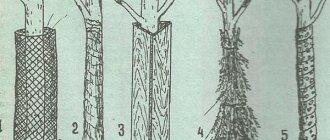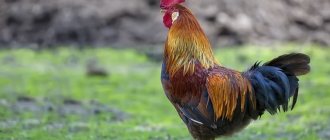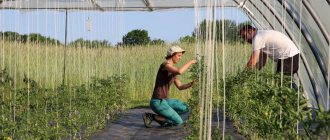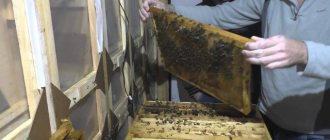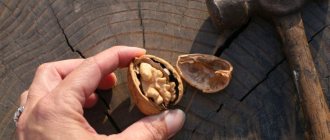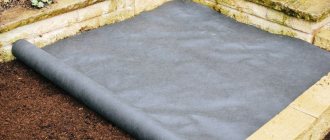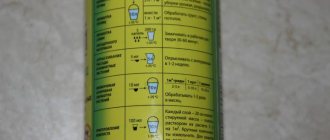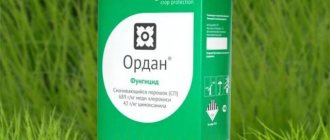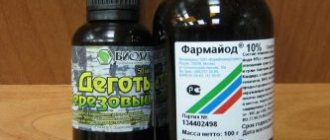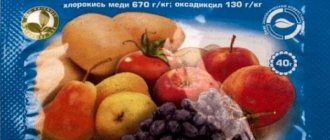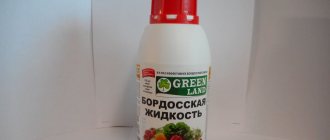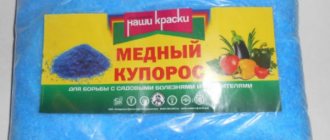Lutrasil
Lutrasil is a covering material for protecting plantings from adverse natural conditions and weeds, which is a fabric of interwoven threads.
Its advantage lies in its convenient use: it does not need to be dismantled when watering, it can be easily lifted and protects the crop from weeds and pests. Condensation does not form on the surface of lutrasil, so the material can last a long time, moreover, it is non-toxic and does not harm crops or humans.
Lutrasil is divided depending on density:
- light white - able to withstand temperatures down to -3 ° C and is used mainly for covering seedlings and first shoots;
- white medium and high density - used for winter covering (frost protection down to -6-7°C);
- black medium density and dense - good for weed control (mulching).
Examples of using
The scope of geotextiles is wide; the following types are divided according to their intended purpose:
- Furniture. Not too dense material, which is used when upholstering mattresses of upholstered furniture. Placed under upholstery fabric, used to protect against dust during transportation.
- Drainage. It passes water well, thanks to its special structure it does not become clogged with sand or silt, and retains high filtering capacity for a long time.
- Garden or agrofibre. The main difference is that it is light-stable, that is, it does not react to ultraviolet radiation.
- Packaging. Thin material from which covers for packaging (for example, for shoes) are sewn.
- Building. There are many different materials in this group with different characteristics. The main ones are tensile strength and tensile strength.
Construction
One of the main functions of geotextiles is to separate different layers. These can be different fractions, different materials.
When constructing a foundation of any type, a gravel-sand cushion is laid out at the bottom of the pit. To ensure that gravel and sand do not mix and perform their functions, geotextiles are laid between them. Its density is 160-180 g/m², but it can be more/less depending on specific conditions. Crushed stone is laid at the bottom of the pit when constructing roads, droshky, parking areas, playgrounds, and lawns. To prevent it from mixing with the soil, geotextiles are also placed under the crushed stone. Density is selected depending on the purpose of the object and the planned load
You also need to look at how important water drainage is.
To drain water, drainage pipes are installed in areas. They have small holes through which water seeps in and then falls into the wells.
To prevent the holes in the pipes from becoming clogged, they are wrapped with geotextile membranes. For better filtration, drainage pipes can be sprinkled with crushed stone. To prevent it from mixing with the soil, geotextiles are also used.
For all types of work, in order to prevent the materials from “spreading” and mixing, it is necessary to take the width of the geotextile into account so that it rises to the entire thickness of the layer of bulk material and is still wrapped by 30-60 cm. With planned significant loads, turning can be done doing more will be more reliable. This applies to both construction work and landscaping, gardening, etc.
In the arrangement of the site
Work on the site involves a large amount of earthwork. To ensure long-lasting results, geotextiles are used.
- When forming flower beds and beds, fertile soil is often brought in. To prevent it from mixing with the “native” soil, the layers are separated by this material. It will also prevent plant roots from growing from below.
- When forming hills and hills, to maintain the shape, layers of soil are laid with geotextiles.
- When creating artificial reservoirs, geofabric is placed on the bottom. It is more durable and will better reinforce the foundation pit.
- Separation of various materials when creating a rock garden, rock garden, etc.
- The gaps between the beds can be covered with geosynthetic material, pouring gravel on top. It looks solid, it’s clean, and weeds don’t sprout. During redevelopment, the geofabric is raised and the stones are removed. You can begin further work.
- To provide shelter from the sun and protection from frost, instead of mulch, agrofabric, which is the least dense geotextile, is placed on flowerbeds and beds.
These are just some of the processes in which this material can be used. There is also an application that is rarely seen in our country - when creating green roofs.
Spunbond
Spunbond is a fairly inexpensive non-woven covering material that protects crops from ultraviolet rays, insects and precipitation, allowing the crop to “breathe.” This material is very light and does not put pressure on young shoots, it is not afraid of mold, and it does not have a negative effect on plants.
When using spunbond, ventilation is recommended to avoid waterlogging, since the fabric is capable of allowing water to pass through. It can be used for more than one season, but it must be disinfected annually.
Depending on the density of the material there are:
- white with a density of up to 30g/m2 - it is used for covering not only seedlings, but also for berry bushes, flowers, and ornamental shrubs;
- white with a density of 30-50 g/m2 - folded in several layers, suitable for covering any crops and greenhouses in winter;
- black with a density of 50 to 60 g/m2 - it contains ultraviolet stabilizers, which results in a dark color and increases service life.
Criterias of choice
When choosing agrofibre, it is very important to pay attention to the purpose and characteristics of this material. The selection criteria here are quite obvious, but there are also factors that require special attention. To avoid mistakes, it is worth considering some points from the very beginning:
To avoid mistakes, it is worth considering some points from the very beginning:
- For a greenhouse, it is worth considering exclusively light-transparent types of coating with a density of 30 to 60 g/m2. The material will ensure light transmission at the level of 85-65% and will cut off harmful ultraviolet rays. You can set up a greenhouse with such a coating as early as March, the soil will warm up better, and residual frosts will not harm the seedlings.
- Shrubs and trees need to be insulated with the thickest agrofibre. In regions where winter temperatures drop below −20 degrees, it is recommended to use the material folded in 2-3 layers to avoid frostbite of the branches.
- The thickness of agrofibre affects its light transmission. Experienced gardeners change the coating throughout the season. In early spring, the thinnest fabrics are used to help the seedlings warm up and grow faster. During the period of fruit ripening, you can choose a coating with values of about 30-40 g/m2.
- Agrofibre with a colored coating - yellow, pink, purple - works to increase productivity. It serves as a kind of filter in the path of sunlight, protecting plants from external factors dangerous to them. The average increase in the number of fruits can reach 10-15%.
- For growing strawberries, choose a black or black and white coating. It helps make plant care and harvesting as simple and convenient as possible. The absence of weeds in the beds makes it possible to direct all the nutrients to the development of cultural plantings. This coating will help minimize the care of other plants - cabbage, tomatoes, cucumbers in open ground.
Considering these selection criteria, you can easily select the appropriate agrofibre for use in the country house, garden or greenhouse.
You can find out how to make a greenhouse on your site with your own hands using agrofibre by watching the following video.
Geotextiles
Geotextile is a fabric made of polymer fibers. As a rule, it is used in the construction of highways, but it also finds application in agriculture. The advantages of this material are frost resistance and durability, it is resistant to rotting and damage. Geotextiles are “breathable” and allow moisture to pass through, as a result of which the plantings are not covered with condensation and do not rot, since an optimal microclimate is created under the covering layer. One of the disadvantages of the canvas is the price; it is more expensive than spunbond.
There are a large number of covering materials, but we recommend choosing one of the ones discussed above, since they have proven themselves well in the experience of many gardeners.
Types of covering materials and tips for use
When growing crops, many gardeners use covering material, which not only serves to protect the plant from the cold in winter, but also performs other functions.
Polyethylene film is traditionally used to cover plants. However, many other types of covering fabric have now appeared. And the polyethylene fabric itself has changed and improved.
Polyethylene film
The film varies in thickness, which affects its strength and wear resistance. Conventional film has the following characteristics: it protects against cold, sufficiently retaining heat and moisture. However, it is not capable of allowing air to pass through, has a waterproof effect, promotes the formation of condensation and requires periodic ventilation during use. Stretched on a frame, it sags after rain.
Its service life is short - about 1 season
There are a large number of varieties of polyethylene film.
- With light-stabilizing properties. The addition of a UV stabilizer makes it more durable and resistant to the negative effects of UV radiation. Such material is capable of retaining water and heat in the soil. The film comes in black and white: the white surface reflects the rays of the sun, and the black surface inhibits the growth of weeds.
- Thermal insulation film. Its direct purpose is to preserve heat and protect against cold snaps in the spring and night frosts. White or light green canvas has more of these properties: this film creates a microclimate 5 degrees higher than usual.
- Reinforced (three-layer). The middle layer of the canvas is formed by a mesh. Its threads are made of polypropylene, glass fibers or polyethylene and can be of different thicknesses. The mesh increases strength, reduces the ability to stretch, and can withstand severe frosts (up to -30), hail, heavy rain, and strong winds.
- Air bubble. The transparent surface of the film has small air bubbles, the size of which varies. The larger the size of the bubbles, the higher the light transmittance of the film, but at the same time its mechanical properties decrease. It has good heat-insulating characteristics: it protects crops from frost down to -8 degrees.
- PVC film. Of all types of polyethylene film, it has the highest strength and durability; it can serve even without removal from the frame for about 6 years. It contains light-forming and stabilizing additives. PVC film transmits up to 90% of sunlight and only 5% of UV rays and is similar in properties to glass.
- Hydrophilic film. Its distinctive feature is that condensation does not form on the inner surface, and moisture, collecting in streams, flows down.
- Film with a phosphor additive that converts UV rays into infrared rays, which help increase productivity. It comes in light pink and orange colors. Such a film can protect against both cold and overheating.
Frost protection
The main goal of all gardeners in the middle zone is to protect plants from spring and autumn frosts. In spring, early warming of the soil gives an early harvest, and the planted seedlings remain undamaged by returning cold. In the fall, non-cold-resistant plants take shelter, which helps them survive the winter and enter the growing season again.
Any covering material can be used to protect against frost. If this is greenhouse protection, film is more suitable than non-woven fibers. If you need to directly wrap each rose bush before winter, a white dense non-woven material is ideal.
For exotic ornamental shrubs, you can build winter mini-greenhouses, or you can also wrap them with Spunbond. There are special cones, tents and bags made of non-woven material on sale for covering large plants, which, in addition to protection from the cold, also perform an aesthetic function, making the area attractive.
When choosing a covering material, every summer resident needs to think about where and how it will be used. Measure the area of the ridges, if you plan to cover them completely, calculate the amount of material for a greenhouse or temporary greenhouse. Price parameters are also important. An inexpensive material that must be replaced annually, or a durable and expensive material that does not require such labor costs. Choose and cover what suits you best, winter is coming.
Types of covering material
Based on their composition, covering materials are divided into two categories: polyethylene and non-woven (agrofabric, agrofibre), which are available in white and black. A two-color material has also appeared on sale, consisting of a black bottom layer and a white top layer: the black side of the canvas is laid on the soil so that weeds do not develop in it, and the top white side will reflect light. As a result, the soil does not overheat, and the plants receive more light, develop faster and ripen earlier.
Using covering material, you can:
- achieve a significant increase in crop yields;
- protect plants from the negative effects of low temperatures;
- achieve faster fruit ripening;
- retain moisture in the soil during dry times;
- spend less effort cultivating the soil.
Polyethylene materials
Polyethylene film is a covering material that has long been known and is still in demand in gardening and vegetable growing. It is sold in the form of sleeves or rolls. The thickness of the polyethylene film is from 0.03 to 0.4 mm. This material transmits light very well, protects plants from low temperatures, rain, wind, and retains heat.
In addition, polyethylene is short-lived: its service life is usually one season. True, you can use a special type of polyethylene covering for the construction of greenhouses and greenhouses - reinforced film, which, although not so plastic, will last longer. Types of film have also appeared on sale that have the property of activating plant photosynthesis, as a result of which crop resistance to adverse factors increases, they grow better and develop faster.
What are the differences between covering sheets?
Covering nonwoven materials are quite similar in appearance, but still differ from each other. When choosing them, you must take into account the product labeling, which is indicated by numbers. The higher it is, the denser the material. It will also retain heat much better.
The thinnest and lightest covering materials are well suited for frameless shelter. In addition, they have very excellent light transmission and help create favorable conditions for growing plants. Such products can also protect plants from insect pests and birds.
Covering nonwovens marked No. 23 have the same qualities as thinner products, but they are much stronger. To provide protection against severe frosts, products marked No. 30 and No. 42 are ideal, as they help ensure the best conditions.
It is worth noting that without a frame, only lightweight non-woven covering material can be used, while denser and more durable products require a reliable and stable frame. The most durable products are considered to be models marked No. 60 and No. 80.
Non-woven covering materials
Advantages and disadvantages of non-woven agrofibers
Today there are many non-woven covering materials on the market under different names, but the most famous of them are the brands “Agrotex”, “Agrospan”, “Spunbond”, “Lutrasil” and “Agril”. What are the advantages of non-woven materials over polyethylene covering?
Nonwoven materials differ in density as follows:
- lightweight (14-17 g/m²), which are available only in white: they will protect your plants from spring frosts, the burning sun, insects and birds;
- medium (28-42 g/m²), also exclusively white. Such materials are intended for constructing greenhouses, greenhouses and protecting shrubs and crops from winter frosts;
- dense (60 g/m²), which can be either white or black and are used for the same purposes as medium-density materials. Black agrofabric is often used to mulch the soil: without receiving light, weeds cannot develop and die, and the crop protected by the agrofibre is planted in its slots.
However, even these wonderful materials cannot save gardeners and gardeners from all the work: in order for insects to pollinate cucumbers, strawberries or zucchini, agrofibre must be removed in the morning and pulled back onto the bed in the evening. In addition, the coating can be damaged by crows, cats or dogs.
Lutrasil
This material looks like a light spider web. Condensation does not form on its surface, so it can be kept on the beds for a very long time.
Spunbond
Spunbond is a white or black non-adhesive non-woven fabric that creates a special microclimate for plants: it retains heat, allows sunlight, air and water to pass through, but does not rot. Black spunbond is intended for mulching beds and controlling weeds, and the purpose of the white material depends on its density:
- spunbond SUF 17 is designed for frameless shelter of plants from pests, heat and dry air;
- SUF 30 is used to protect crops from temperature changes and at night. It is usually stretched over a frame;
- SUF 42 material protects greenhouse plantings from frosts down to -3 ºC;
- SUF 60 saves plants in greenhouses and greenhouses from frosts down to -6 ºC and below. Tree trunks and shrubs are wrapped with this material for the winter: it will not only warm them, but also protect them from rodents.
Agril
This easy-to-use, durable non-woven material has excellent permeability to moisture, air and sunlight, while dispersing it well. It does an excellent job of protecting plants from both heat and low temperatures. When mulched, agril protects the soil surface from compaction, protects it from erosion and promotes crop ripening at least a week ahead of schedule. On sale there is transparent agril with a density of 17 and 40 g/m² for constructing greenhouses and protecting plants from heat and cold, as well as black agril with a density of 50 g/m² for mulching vegetable and strawberry beds.
Under the mulching non-woven fabric, biological processes are not disturbed, so the soil does not need to be weeded or loosened.
Comparative analysis of agrofiber brands
Covering material "Agrospan" is produced in Russia. Several manufacturers are engaged in its production: for example, Ivanovo Nonwoven Materials Plant, Agrokhoztorg, Hexa, Zagorsk Experimental Plastics Plant, etc.
In addition to Agrospan, there are other brands of spunbonds:
| Trademark | Manufacturer country | Distinctive features |
| "Agrospan" | Russia | · high-quality threads and UV stabilizer “Agrolight” extend the service life up to 5 years; · 7 density options; · there is black and white material; · width up to 12.2 m. |
| "Lutrasil" | Germany | · homogeneous material corresponding to the declared density; · 5 density options; · there is black and white material; · width up to 16.9 m. |
| "Spunbel" | Belarus | · high breaking load and resistance to UV irradiation; · 5 density options; · there is black and white material; · width up to 4.2 m. |
| "Agril" | France | · high-quality threads and UV stabilizer guarantee at least 3 seasons of service; · 4 density options; · there is black and white material; · width up to 4.2 m. |
| "AgroSUF" | Russia | · durable, smooth, homogeneous fabric; · 4 density options; · there is black and white material; · width up to 4.2 m. |
Thus, the non-woven covering materials offered on the market differ slightly in the maximum width of the panels and the density range. "Agrospan" stands out among them due to its extended service life.
The price of Agrospan varies depending on the width of the canvas and its density. For amateur farming, packaged pieces of material are most in demand:
| Density, g/m2 | Width, m | Length, m | Average cost, rub |
| Agrospan 17 | 1,6 | 10 | 90 |
| Agrospan 17 | 3,2 | 10 | 130 |
| Agrospan 30 | 1,6 | 10 | 130 |
| Agrospan 30 | 3,2 | 10 | 210 |
| Agrospan 42 | 1,6 | 10 | 150 |
| Agrospan 42 | 3,2 | 10 | 280 |
| Agrospan 60 | 1,6 | 10 | 300 |
| Agrospan 60 | 3,2 | 10 | 390 |
| Agrospan 60 black | 3,2 | 10 | 410 |
| Agrospan 80 black | 3,2 | 10 | 560 |
| Agrospan 90 | 3,2 | 10 | 650 |
| Agrospan 110 | 3,2 | 10 | 790 |
Field research conducted in 2015 in Rostov-on-Don showed the following advantages of growing vegetable crops under Agrospan:
- effective protection of plants from diseases and pests;
- effective protection against frost and extension of cultivation period;
- stabilizing soil moisture levels and reducing watering rates;
- optimization of the air exchange regime under the covering material;
- reducing differences in day and night temperatures under the material;
- reduction of labor costs by 5 times;
- increase in yield by 20%.
The main disadvantage of Agrospan, like other spunbonds, is the low degree of protection against frost. It depends on the density of the material. On average, one layer of Agrospan protects against return frosts down to -4⁰C.
How to choose covering material for plants
With the arrival of spring, every summer resident begins the time of troubles and worries about his new “wards” and their comfortable stay during the first spring frosts. We try to cover young plants as best as possible, creating an optimal microclimate for them. We all know well such covering material as polyethylene film, but the choice is not limited to this. I propose to take a closer look at the features of each material in order to understand which one and why it can be useful to us. We will talk about covering materials of artificial origin.
Lutrasil is a good covering material
Spunbond, lutrasil, agril, spantex, agrosuf, agrospan - what is it?
Surely many of you have come across these outlandish names. An experienced gardener immediately understands what we are talking about, but for a beginner it is like the alphabet of a new, unlearned language. All of these are well-known brands under which a material that is extremely necessary in gardening, consisting of non-woven polypropylene fiber, is manufactured.
Covering material for beds
When I went to buy non-woven polypropylene material for covering strawberries, I didn’t see any difference between the rolls, and the consultant then also couldn’t tell me what the fundamental difference was. When I brought my purchase home, it turned out that the material of the purchased density can be used to cover greenhouses in the winter, but it is not very suitable for berries in the spring. Let’s talk about the density of non-woven material.
Density of non-woven polypropylene fiber
- 17-30 g/ m² - a material with this density range would be just right for my purposes. It is able to protect plants in open ground from strong sun and short spring frosts at night, and due to good permeability of air, water, light and good thermal conductivity, it helps to organize a special microclimate for plants for the best growth and development. The advantage of this material is also protection from birds and insects. Shrubs, berries, vegetables, fruits and ornamental plants, mainly growing in open soil, are covered with material with a density of 17-30 g/m².
Lutrasil with a density of 17-30 g/m²
- 42-60 g/ m² is perfect if you plan to build a greenhouse with arcs and provide the plant with winter shelter.
Cover made of non-woven material with a density of 42-60 g/m²
- 60 g/ m² - a material of this density “for the lazy”; its benefits more than pay for its market value. When producing the material, some companies add a UV stabilizer, which extends the life of the canvas. And the addition of carbon black gives the non-woven material a black color. This color promotes greater absorption of sunlight, the plants receive more heat, but the weeds, being under such cover, “do not see” the sun and die. Black is most often used as mulch, white is stretched over frames to protect plants. The structure of the material is such that it perfectly allows moisture to pass through. Therefore, watering and applying liquid fertilizers will not be difficult.
Covering roses with lutrasil with a density of 60 g/m²
Now there are so many different offers on the market that it’s hard not to lose your head. By and large, the essence of all brands of covering nonwoven materials is the same. The difference is in proprietary manufacturing technologies and, of course, in price and quality. The most popular on the Russian market, it seems to me, is still spunbond, the name of which has actually become a household name for covering materials, like diapers for diapers or copiers for photocopiers.
What is the difference between agrofibre and geotextiles?
Such material will retain heat much better than any greenhouse film. Growing under such material makes work easier, since there is no need to control weeds.
Black agrofibre is used in open ground beds, most often to protect against weeds. This material allows absolutely nothing to pass through, therefore nothing will grow under it. This solution is specifically for covering the soil, while it is able to freely allow air and moisture to pass through. Black agrofibre can last up to five seasons. This is an ideal solution for growing strawberries and strawberries. If plantings are literally covered with white material, then the soil directly under the plant is covered with black.
Spunbond
In our country, non-woven material made using Spunbond technology is very widely used due to its properties, quality and price. It is durable, lightweight, environmentally friendly, does not deform due to temperature changes, and allows moisture and air to pass through. Moreover, it is produced by both foreign and Russian manufacturers. The canvas can be either white or black for mulching the surface. Spunbond is used in many areas, and in gardening it is especially valued among covering nonwoven materials, its density is from 17 to 60 g/m².
Shading the rose garden with spunbond
What types of paintings are there?
Today, a modern summer resident has a huge selection of products that protect plants from bad weather. Covering nonwoven materials are presented in a very wide range, and among the most popular types we should highlight:
- lutrasil;
- spunbond;
- agril;
- agrospan;
- Lumitex.
Each of these types of materials has its own specific characteristics that must be taken into account when choosing them.
Polyethylene film
It has long been a popular material for the needs of gardeners. I propose to consider various options for polyethylene film.
Polyethylene film is a well-known material for gardener needs.
- Light stabilized film
A UV light stabilizer has been added to the composition of this film; it helps protect the polymer coating from the sun's rays that degrade it. The stability of the film is determined by the amount of stabilizer added. A dye can also be added to the film, which changes the spectrum of sunlight. The film retains heat well and retains moisture without disturbing the structure and density of the soil. The use of film helps to preserve fertilizers from leaching, which makes it possible to obtain earlier flowering and ripening of the crop.
Which is better, spunbond or polyethylene film?
Gardeners often ask this question, but the answer depends on your goals. Spunbond allows moisture and air to pass through and is very light. If you loosely cover a young sprout with low-density spunbond and strengthen the edges with something, moisture will not accumulate in the folds and press down the tender young stem, and under the scorching rays of the sun there will be no greenhouse effect that can damage the plant. We also protect the plant from parasites, birds, and retain heat. The spunbond does not need to be removed to water the seedlings; ventilation is also good. For frame structures, you should use spunbond of the highest density; lighter ones will tear.
Polyethylene film, as is known, does not allow moisture to pass through, allows light to pass through freely (in the case of a transparent film) and retains heat much better than spunbond. These are its advantages, thanks to which the film is excellent for creating mini-greenhouses. This also leads to its disadvantages - possible overheating of the plant, the need to remove the film for watering and ventilation.
Polyethylene film does not allow moisture to pass through, allows light to pass through (if transparent) and retains heat better than spunbond
So, the film is good at the beginning of the season, so that the soil warms up faster; it helps if you need to protect plants from excessive rainfall or, conversely, retain moisture underneath. If it gets warmer and the climate is fine, then we can safely replace the film with spunbond and its analogues.
Polycarbonate
It is difficult to imagine a modern greenhouse without polycarbonate; it is one of the most reliable shelters for plants and creates all the conditions for their growth and development. This material is not afraid of rain, wind, or bacteria; it is durable, lightweight, retains heat well and transmits light.
Cellular polycarbonate. Photo from the site remkompbvd.ru
What is so remarkable about cellular polycarbonate for greenhouses? Essentially, polycarbonate is a sheet of plastic with cavities inside, somewhat similar to “honeycombs”. It is lighter than monolithic and has no odor. The sheets are durable, but at the same time quite light. For example, glass weighs 16 times more, and acrylic 3 times more, than a sheet of cellular polycarbonate.
Cellular polycarbonate is non-flammable, but has excellent ductility. Transparent polycarbonate is capable of transmitting up to 92% of sunlight. When producing polycarbonate sheets, a UV stabilizer can also be added to them, which increases the service life of this material.
A greenhouse made of polycarbonate is very durable and easy to assemble. The structure of cellular polycarbonate and the thickness of the sheet affect its scope. To better understand the thickness of polycarbonate of different structures, below is a table of indicators. Polycarbonate indicators
The produced polycarbonate sheets have standard sizes of 2.1x2 m, 2.1x6 m and 2.1x12 m. The thickness is different, it can be from 3.2 mm to 3.2 cm. The produced cellular polycarbonate can be of various colors. When choosing such a material, you should remember that the more complex its internal structure, the more reliably it protects from snow and wind.
A greenhouse made from this material is very durable and easy to assemble. You can see how to make a polycarbonate greenhouse with your own hands in the article Do-it-yourself polycarbonate greenhouse.
Polycarbonate greenhouse
